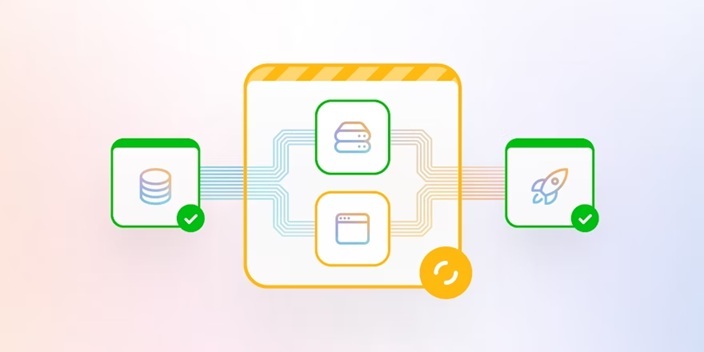In software development, how you manage your codebase plays a big role in the success of your project. When working with multiple teams or services, code organization becomes even more important. Two common approaches to structuring code repositories are polyrepo and monorepo. Each has its own strengths, but as teams grow and projects become more complex, many companies choose to move from polyrepo to monorepo.
In this blog, we’ll explain what polyrepo and monorepo mean, why teams migrate to monorepo, what challenges they face, and how to refactor the code to make the transition smooth. If you’re working on large projects or plan to manage multiple services, understanding this topic is essential.
This concept is often covered in a well-structured full stack developer course in Bangalore that focuses on real project architecture, team collaboration, and managing scalable systems.
What is a Polyrepo?
A polyrepo is a setup where each service, component, or package has its own separate repository. For example, if your company has five microservices, each will have its own Git repository.
Pros of Polyrepo:
- Teams can work independently
- Smaller repositories are easier to manage
- CI/CD pipelines are usually faster
Cons of Polyrepo:
- Harder to share common code
- More setup for each new service
- Complex versioning across projects
Polyrepos work well when projects are simple and small teams are working independently. But as the system grows, it becomes difficult to manage shared code and dependencies.
What is a Monorepo?
A monorepo is a single repository that includes all your projects, services, and packages. Instead of having one repo per microservice, everything lives under one roof.
Pros of Monorepo:
- Easier to share code across projects
- Simplified version control
- Unified development and testing processes
- Better visibility for all teams
Cons of Monorepo:
- Can become large and harder to clone
- More complex build tools needed
- Risk of accidental changes to other services
Why Migrate from Polyrepo to Monorepo?
As your company adds more services or packages, using separate repositories can lead to duplication, difficult coordination, and challenges in code sharing. Monorepo solves these issues by bringing everything together.
Some common reasons for migrating:
- Too much repeated code
- Hard to sync updates across services
- Too many manual steps for setup
- Teams need better collaboration
Moving to a monorepo allows teams to work in the same environment, share tools, and reduce time wasted on managing multiple repositories.
Understanding these trade-offs is something that you’ll often explore deeply in a full stack developer course, especially when learning about system architecture and enterprise-level projects.
Common Challenges During Migration
Switching from polyrepo to monorepo is not simple. It needs planning, teamwork, and sometimes new tools. Here are the main challenges that most teams face:
1. Different Build Tools
Each repo might use its own tools for building and testing. Combining them requires standardization.
2. Naming Conflicts
Services may have files or packages with the same name. These conflicts must be resolved before combining them.
3. Dependency Hell
Multiple services might use different versions of the same library. When merged, these conflicts need to be handled carefully.
4. CI/CD Reconfiguration
Your CI/CD pipelines will need to be rebuilt. In a monorepo, you need smarter pipelines that only run tests for changed parts of the code.
5. Developer Mindset
Some developers are used to working independently. In a monorepo, changes can affect other teams, so communication is more important.
Refactoring Techniques for a Smooth Migration
To move from polyrepo to monorepo safely, follow a step-by-step approach. Here are some techniques that can help.
1. Plan the Folder Structure
Decide how your monorepo will be organized. For example:
/apps
/service-a
/service-b
/libs
/common
/auth
This makes it easy to separate apps and shared libraries.
2. Use Tools like Nx or Turborepo
Nx and Turborepo are tools built to manage monorepos. They help with dependency graph tracking, caching, and task running.
These tools let you:
- Build only what has changed
- Share code between projects easily
- Maintain performance even with many projects
3. Consolidate Shared Libraries
Move repeated code into shared libraries in the libs/ folder. This reduces duplication and makes updates easier.
4. Standardize Build Scripts
Make sure all services use the same commands to build and test. This avoids confusion and improves CI/CD flow.
Example:
“scripts”: {
“build”: “tsc -p tsconfig.json”,
“test”: “jest”
}
5. Set Up Smart CI/CD
Use your monorepo tool to build only the changed services. This reduces time and cost.
For example, Nx can detect which app or lib was changed and only run tests for that part.
6. Communicate and Train Teams
Migration is not just technical. It affects how people work. Share documentation, host training sessions, and set clear rules for working in a monorepo.
Teams that understand the benefits are more likely to support the change.
This kind of hands-on refactoring is often taught in practical lessons during a full stack developer course in Bangalore, where developers get to restructure existing codebases and prepare them for scaling.
Real-World Example
Let’s say a company has three microservices: auth, payments, and orders. In the polyrepo world, each service has its own repo with its own build tools and dependencies.
To migrate:
- Move all code into a single monorepo
- Create folders /apps/auth, /apps/payments, /apps/orders
- Move shared code like user models into /libs/shared
- Update all imports to use new paths
- Set up Nx for managing the projects
Now the team can:
- Share auth logic between payments and orders
- Test all apps in one place
- Reduce setup time for new services
This gives better control and faster development.
Such real-world projects are part of advanced modules in a good full stack developer course, where learners get to work on system-level problems and not just isolated pieces of code.
Tips to Maintain a Healthy Monorepo
Once you migrate, it’s important to keep the monorepo healthy. Here are a few simple tips:
- Use code reviews to catch cross-service issues
- Keep shared code in clearly named libraries
- Use linting and formatting tools across all projects
- Automate testing for every push or pull request
- Tag and track versions for releases
Conclusion
Migrating from a polyrepo to a monorepo is a smart move for many teams, but it’s not easy. It needs careful planning, code refactoring, and teamwork. The benefits, though, are clear: better collaboration, easier code sharing, and simpler builds.
By using the right tools like Nx or Turborepo, and by following a structured refactoring plan, you can make the move smoothly. After the migration, maintaining the monorepo with good practices will keep your development process clean and efficient.
As development teams grow and projects scale, understanding how to manage code organization becomes very important. That’s why subjects like polyrepo vs monorepo and project architecture are often included in the curriculum of a developer course that goes beyond just learning syntax and frameworks.
Whether you’re working in a startup or a large company, knowing how to refactor and manage large codebases will make you a better and more confident developer.
Business Name: ExcelR – Full Stack Developer And Business Analyst Course in Bangalore
Address: 10, 3rd floor, Safeway Plaza, 27th Main Rd, Old Madiwala, Jay Bheema Nagar, 1st Stage, BTM 1st Stage, Bengaluru, Karnataka 560068
Phone: 7353006061
Business Email: enquiry@excelr.com




